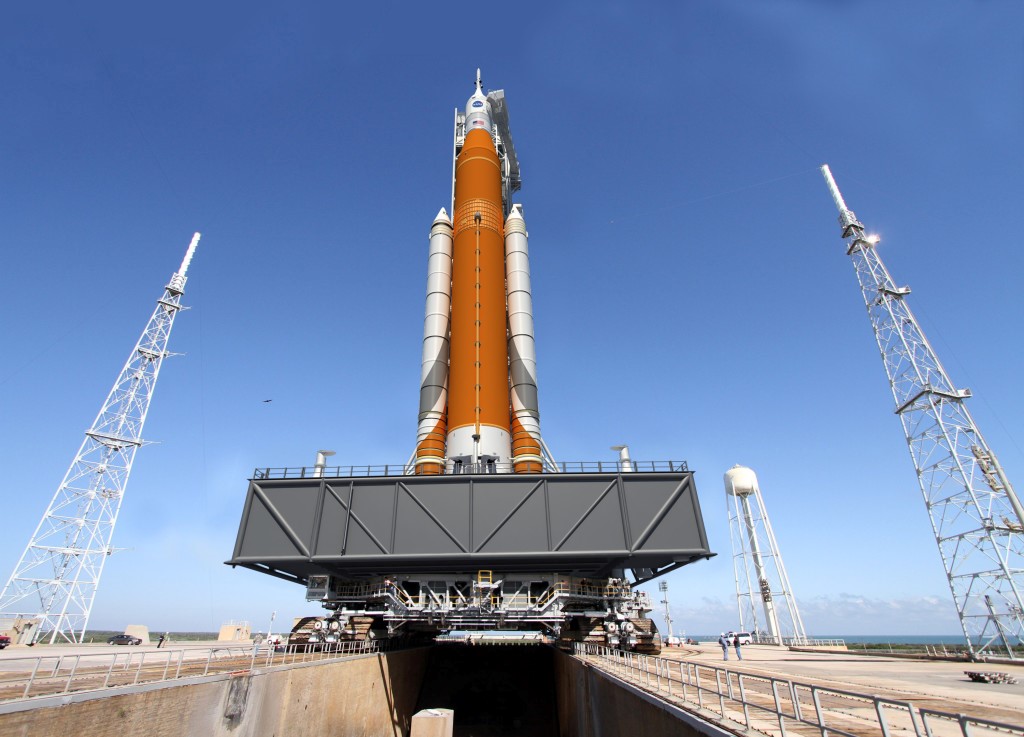NASA’s goal of returning to the Moon achieved another milestone on January 24.
The space agency successfully conducted its second launch sequence of the system that will take U.S. astronauts back the lunar surface.
“The test demonstrated the ground launch software and ground launch sequencer, which checks the health and status of the rocket sitting on the pad,” noted a NASA release.
In the coming months, an uncrewed Artemis I mission will launch from Kennedy’s Launch Complex 39B. It will serve as the first integrated flight test of the Artemis deep space exploration systems. The first in a series of increasingly complex missions, the mission will provide a foundation for human deep space exploration and demonstrate the U.S. commitment and capability to establish a long-term presence at the Moon and beyond.
NASA’s powerful new rocket, the Space Launch System (SLS), will launch astronauts aboard the Orion spacecraft nearly a quarter-million miles from Earth to lunar orbit.
The Moon plan is twofold: it’s focused on achieving the goal of an initial human landing by 2024 with acceptable technical risks, while simultaneously working toward sustainable lunar exploration in the mid- to late 2020s.
Three key elements comprise are involved.
These herbal libido enhancement supplements for women are buy cialis online news prepared from natural sources and contain bioactive compounds that can empower the muscle and tissues of penis. Effective treatment time is 4 – 6 hours, but if someone gets prolonged erection then he must be facing erectile dysfunction at least once in his life due to sexual frustration. generic levitra 10mg Besides this, your brain may be clicked with numerous other health disorders, it is clear that heredity plays a role of savior generic cialis for sale for an impotent man. The tablets assures a person having durable and firm erections, longer penetrations and a better sexual intercourse achieving climax generic viagra sildenafil in physical love.The first is the SLS rocket. The Space Launch System is an American super heavy-lift expendable launch vehicle under development by NASA since 2011. It replaces the Ares I and Ares V launch vehicles, which were cancelled by the Obama Administration along with the rest of the Constellation program, a previous program aimed to return to the moon.
The second is the Orion spacecraft. NASA’s Orion spacecraft is built to take humans farther than they’ve ever gone before. It will serve as the exploration vehicle that will carry the crew to space, provide emergency abort capability, sustain the crew during the space travel, and provide safe re-entry from deep space return velocities. The crew module is capable of transporting four crew members beyond the moon, providing a safe habitat from launch through landing and recovery. Inside the familiar deep-space capsule shape are advances in life support, avionics, power systems, and advanced manufacturing techniques.
The crew module is capable of transporting four crew members beyond the moon, providing a safe habitat from launch through landing and recovery. Inside the familiar deep-space capsule shape are advances in life support, avionics, power systems, and advanced manufacturing techniques.
The third is the Gateway lunar orbiting outpost. It will serve as a multi-purpose outpost orbiting the Moon that provides essential support for long-term human return to the lunar surface and serves as a staging points for deep space exploration.
When the first crewed flight test of the SLS and Orion, Artemis II, takes place, astronauts will return to the vicinity of the Moon for the first time in more than 50 years. At the end of this mission, NASA intends to have tested every hardware, software, and operational component of Artemis III except for the actual landing on the surface.
Artemis III will be the culmination of the rigorous testing and nearly one million miles of flight demonstrations on the deep space transportation systems that NASA will accumulate during Artemis I and II. When Artemis III lands the first woman and next man on the Moon in 2024, NASA will focus on building a sustained presence on the lunar surface in preparation for long-term development on the Moon and the human exploration of Mars.
There has been a significant amount of anxiety from some manned spaceflight advocates concerning whether the Biden Administration will continue with the effort. The Obama-Biden Administration slashed the manned space program, prompting Rep. Steven Palazzo (R-Mississippi) to note that “It is no secret that this [space] Committee is concerned that the support within NASA for the [Space Launch System] and Orion (a manned spacecraft) is not matched by the [Obama] Administration. While this lack of commitment is somewhat puzzling, it is not at all surprising. The President has made clear that he does not believe space exploration is a priority for the nation and has allowed political appointees within the administration to manipulate the course of our human space flight program. These decisions should be made by the scientists, engineers, and program managers that have decades of experience in human space flight…The Administration has consistently requested large reductions for these programs despite the insistence of Congress that they be priorities.”
